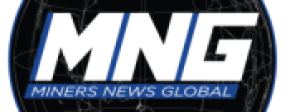U.S.-based Eriez recently conducted a lab study with its HydroFloat coarse particle flotation system and found that installing the system at the mill circuit can cut power usage in half.
The engineering analysis found that the power savings comes from a sizeable decrease in the mill load, and also that about 30% of the total run of mine mill feed can be removed from the circuit prior to conventional flotation – leaving the site with a 40% decrease of conventional flotation capacity, 30-50% reduction in grinding energy and a 30% reduction in tailing management costs.
Eric Bain Wasmund, Eriez vice president for its Global Flotation Business, noted that what it has learned in the lab is now being implemented in the field. Moreover, some typical North American numbers were provided to show the financial benefits of these improvements – meaning the aforementioned results could be even more significant for remote sites or those with limited water supply.
“Our team is not making the kind of incremental second order improvements achieved by simply manufacturing bigger unit operations based on current technology; we are instead focusing on completely re-thinking the flotation process, which hasn’t fundamentally changed in more than 100 years,” he said.
“The HydroFloat CPF technology creates new possibilities for extraction companies to meet their environmental, social and corporate governance (ESG) goals by improving efficiency and enabling better use of resources,” said Wasmund.
The HydroFloat CPF can be applied to sulfides, base metals, iron ore, industrial minerals, potash/phosphate, lithium minerals and others. Applications include Coarse Gangue Rejection – Preconcentration (CGR) and Tailings Scavenging (TS).
Source: Eriez Flotation
